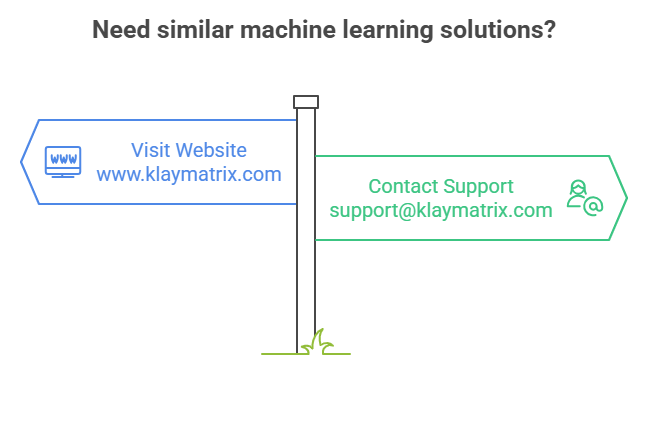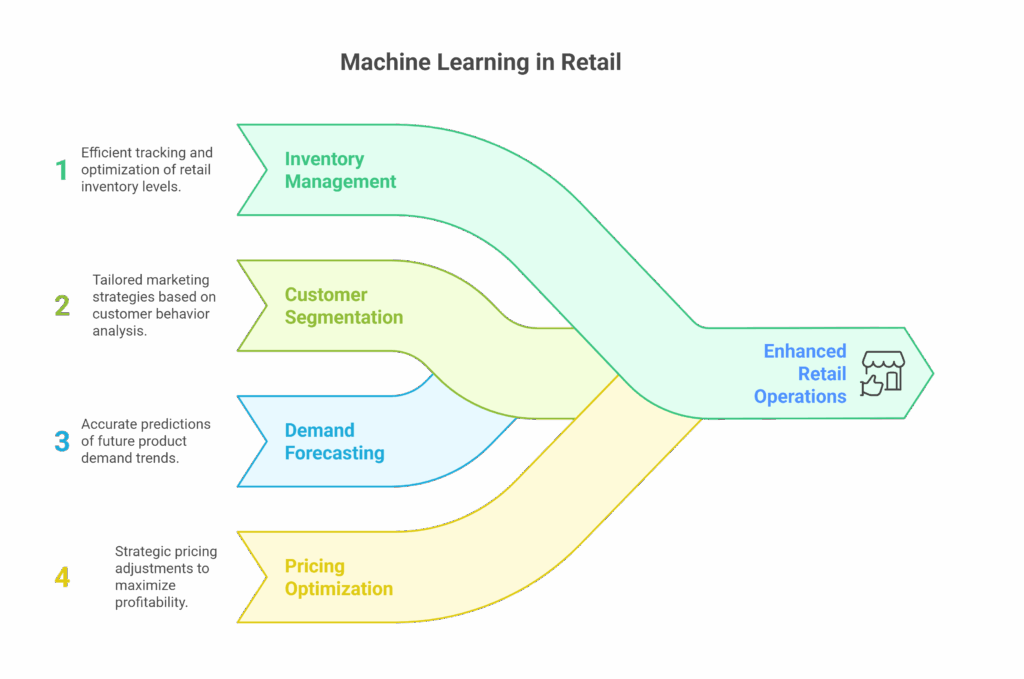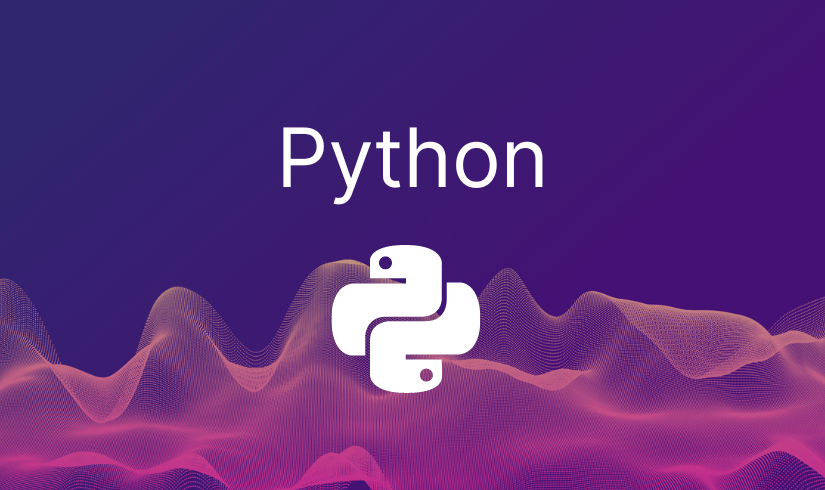Simplifying Machine Learning for Business Users
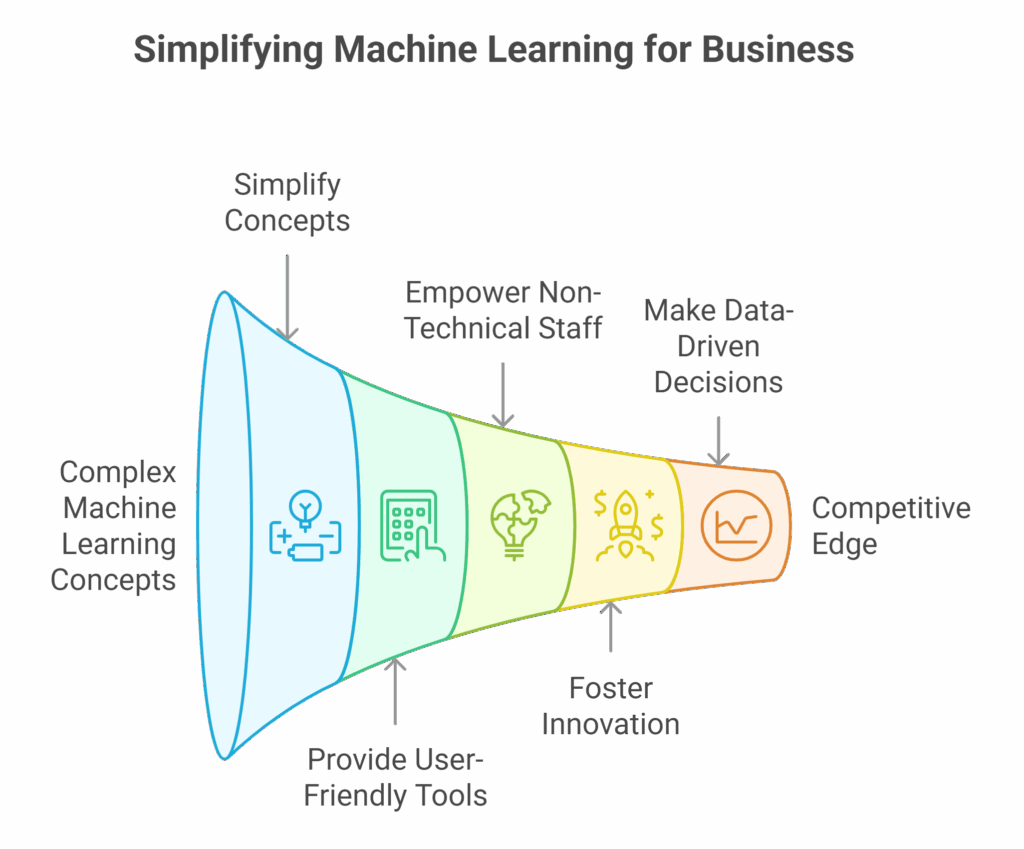
Introduction – The Buzz Around Machine Learning
Walk into any boardroom or open LinkedIn these days, and you’re bound to hear someone talking about “machine learning” or “AI-driven decisions.” But what exactly does that mean for everyday business users? Do you need to be a data scientist to benefit from it? Not at all.
This blog is for business users, managers, analysts, and curious professionals who want to harness the power of machine learning (ML) without needing a technical background. We’ll break down the concepts, show real-world use cases, and explain how you can begin your ML journey with tools you’re already familiar with.
1) What is Machine Learning? (In Plain English)
Machine learning is a way of teaching computers to recognize patterns and make predictions, using data. Unlike traditional programming, where rules are explicitly coded, ML models learn from examples.
Think of it like training an intern: instead of giving them rules for every situation, you show them a few examples, and they learn from there.
Input: Historical data
Output: A prediction or decision
For example: If you provide sales data from the past five years, ML can predict next month’s sales.
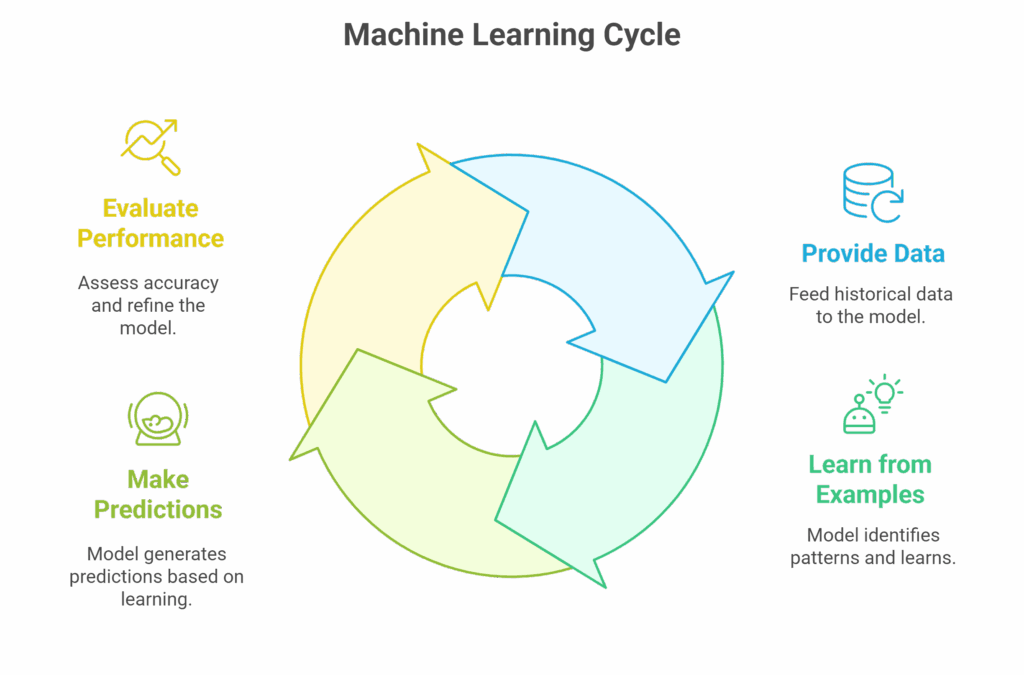
2) Why Should Business Users Care About ML?
ML helps in:
Saving time through automation
Making smarter predictions
Identifying hidden trends
Reducing human bias
Improving customer satisfaction
You don’t need to build the model. You just need to understand what it can do for your business.
3) Everyday ML Applications (You Might Already Be Using Them)
Email: Spam filters use ML
E-commerce: Product recommendations
Banking: Fraud detection
HR tools: Resume screening
CRM tools: Lead scoring
You don’t always see the ML model, but it’s quietly working behind the scenes.
4) Types of Machine Learning (No Tech Needed)
4.1. Supervised Learning: The model learns from labeled data. Example: Predicting sales.
4.2. Unsupervised Learning: The model finds hidden patterns. Example: Customer segmentation.
4.3. Reinforcement Learning: The model learns through feedback. Example: Chatbots improving replies.
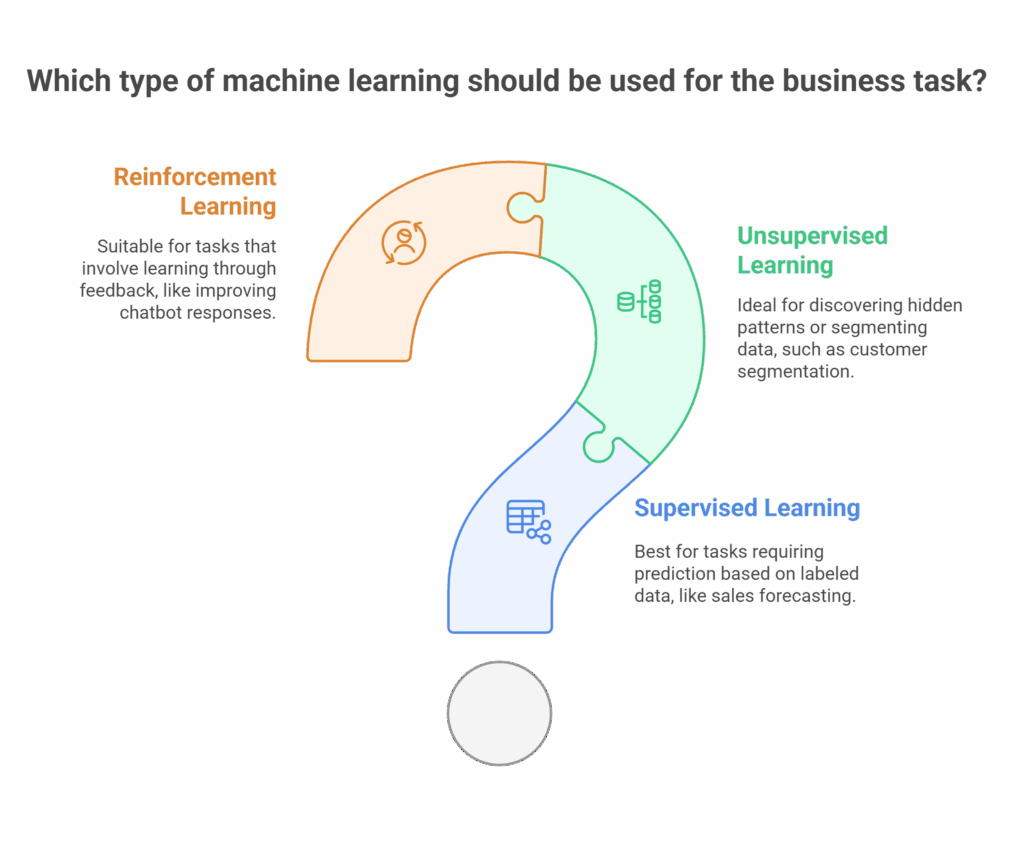
5) A Simple ML Workflow
Data Collection – Gather sales, customer, or operational data.
Data Cleaning – Remove errors and standardize formats.
Feature Selection – Choose the right inputs (age, income, location, etc.).
Model Training – Use software to teach the model.
Testing – See how well the model performs.
Deployment – Use it in dashboards or reports.
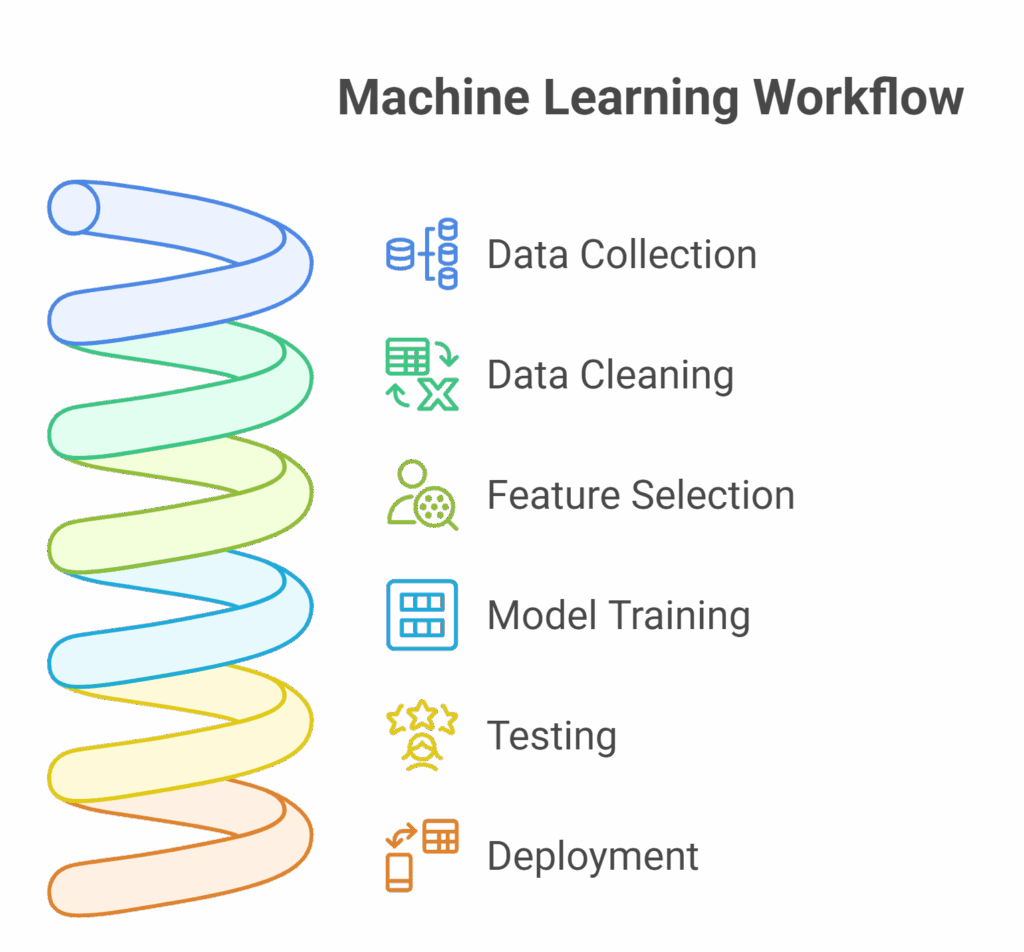
6) ML in Different Business Departments
Sales:
Predict customer churn
Prioritize high-value leads
Marketing:
Personalize campaigns
Forecast ad performance
Finance:
Spot fraudulent transactions
Predict loan default
HR:
Resume screening
Predict employee attrition

7) Start Small: How to Begin ML in Your Company
Identify a simple use case (e.g., forecast monthly revenue)
Gather historical data (even 1-2 years is enough)
Use tools you know (Power BI, Excel, etc.)
Collaborate with data analysts if needed
Test, Learn, Iterate
8) Real-World Examples
Zomato uses ML to personalize restaurant recommendations.
Netflix keeps you binge-watching with ML-powered suggestions.
Banks use ML to assess creditworthiness.
9) What’s Next: Future of ML in Business
AutoML: Letting the system choose the best model for you
Explainable AI: Understanding why a model made a certain decision
Embedded ML: Built into your existing software
Low-code platforms: Business users creating ML workflows visually
10) Where You Can Go From Here
Learn more about AutoML tools
Attend an ML-for-business workshop
Ask your IT team about available internal data
Start with a pilot project
Final Thoughts
Machine learning doesn’t have to be a black box. You don’t need to become a data scientist. But in today’s data-driven world, understanding ML is no longer optional—it’s essential.
Stay curious. Start simple. Let data guide your decisions.
“ML is not the future of business. It’s the present.”
11) Understanding Features and Labels in ML
In ML terminology:
Features are the inputs (e.g., customer age, purchase history)
Label is the output you want to predict (e.g., will buy or not)
Understanding this helps you communicate better with technical teams and build intuition around models.
12) The Role of Clean Data
Bad data leads to bad predictions. Business users can contribute by:
Ensuring data quality
Avoiding duplicate entries
Standardizing values (e.g., date formats, country names)
Clean data is the backbone of effective ML.
13) Ethics and Fairness in ML
ML can unintentionally reinforce bias if trained on biased data.
Business users should:
Ask how fairness is ensured
Check if models treat all customer groups fairly
Demand transparency in outcomes
14) Interpreting ML Results
Understanding metrics like:
Accuracy: How often predictions are right
Precision & Recall: Especially important in fraud or medical use cases
You don’t need deep math, but understanding these can help you trust or challenge results.
15) Model Drift and the Need for Updates
Over time, business conditions change. This causes model drift.
Example: A model trained before COVID-19 may not work well after it.
Business users should:
Check if models are regularly updated
Compare predictions with real outcomes
16) ML and Business Strategy Alignment
ML should support business goals. Ask:
What decision will this model improve?
What KPIs will it influence?
Don’t adopt ML for the sake of it. Align it with growth, efficiency, or customer satisfaction.
17) Using ML to Personalize Customer Experience
ML can:
Suggest products customers are likely to buy
Send emails at the right time
Recommend support articles before someone raises a ticket
This boosts engagement and retention.
18) The Business Case for ML Investment
ML isn’t just tech—it’s an investment. Show ROI by:
Highlighting time saved
Revenue increased from predictions
Costs reduced by automation
Start small, scale with confidence.
19) Collaborating with Data Teams
You don’t need to do it all alone. Collaborate with:
Data engineers (who prepare data)
Data scientists (who build models)
Analysts (who present insights)
Speak their language by understanding basic terms.
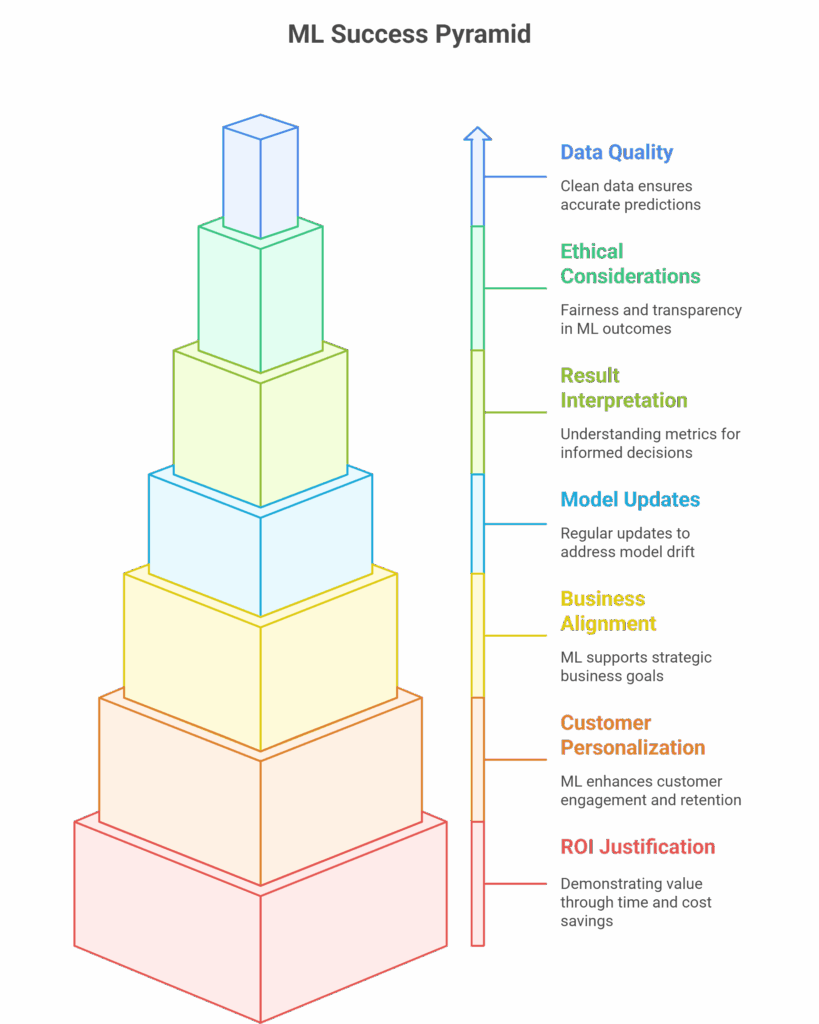
Summary and Takeaway
Machine learning can seem complex, but with the right approach, any business user can benefit from it. The key is to:
Understand what it can do
Start with small, real problems
Use familiar tools
Collaborate with the right people
By doing this, you make ML not just understandable but actionable.
